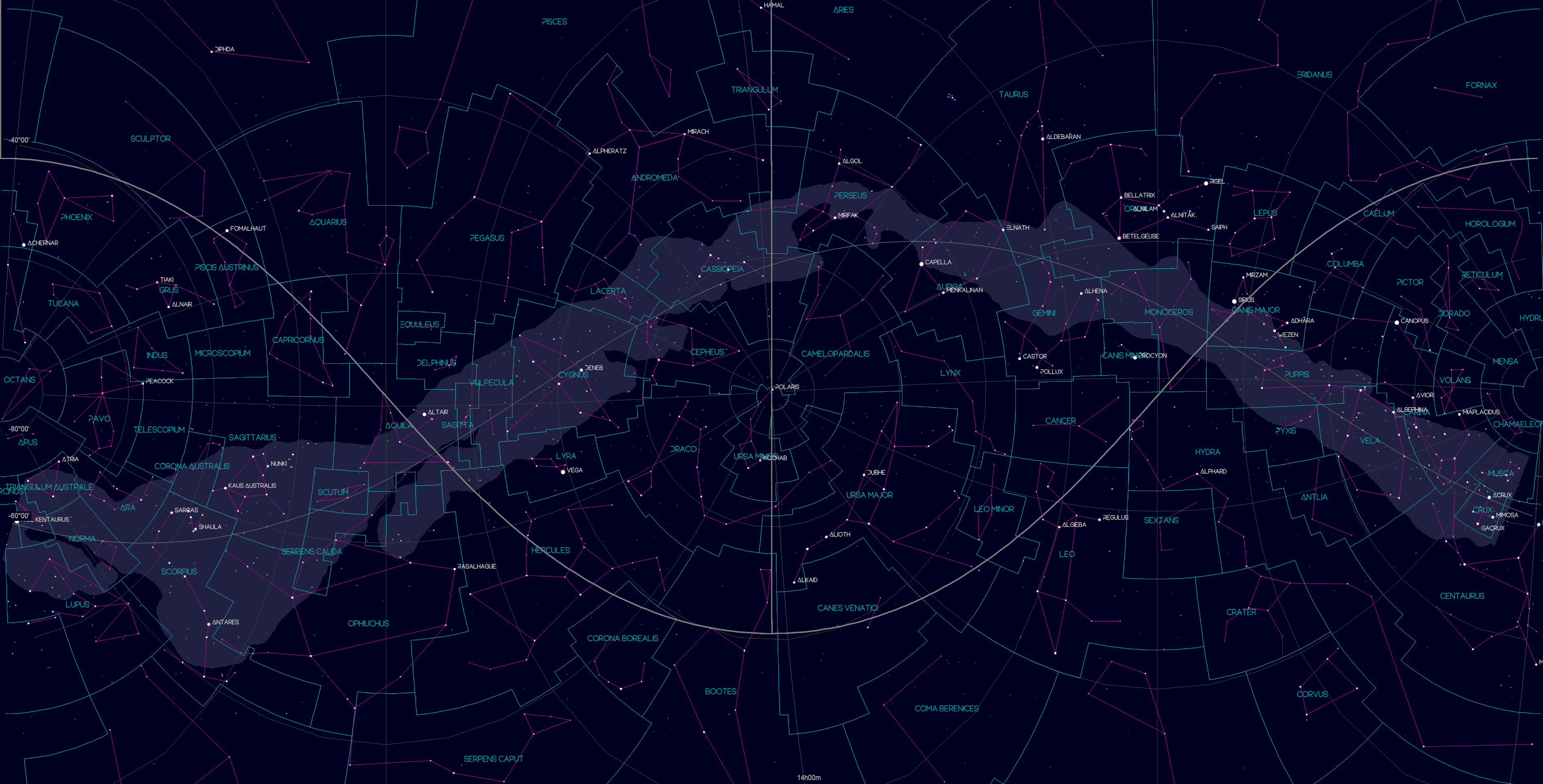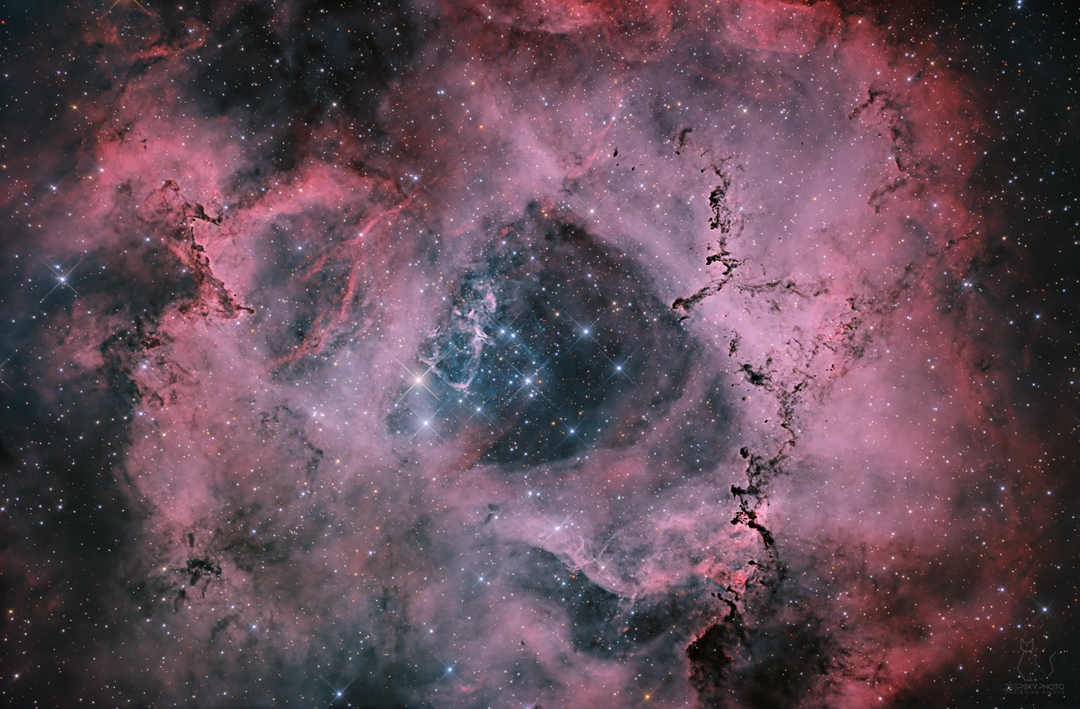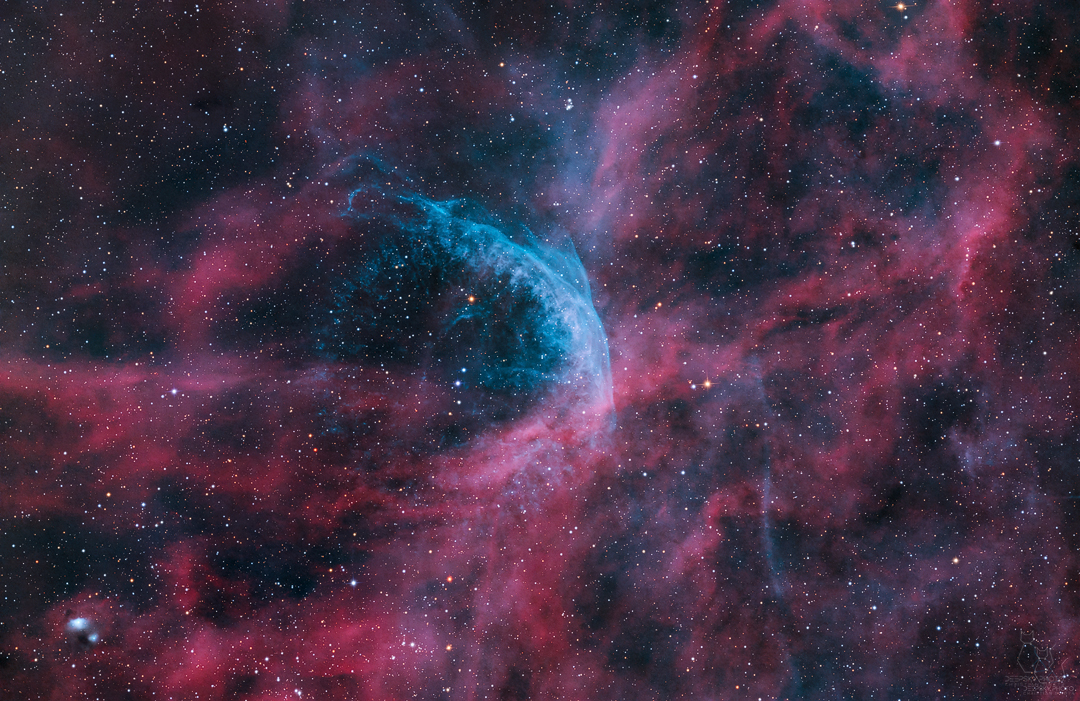

Welcome to the interactive skymap of deepsky.photo – you’ll find all my astrophotography projects here mapped to the nightsky.
As the used image is almost 4k pixels in width, I wanted to provide it as an immersive feature, so there’s no “distraction” caused by website elements such as header, footer and navigation elements.
If you hover over a “red circle”, you will be shown which deepsky object is located there. After you click on it, it will display a preview on the left, together with links to their respective project pages.
To return to all astrophotography projects, please click here.


IC5070 Pelican Nebula (Rev. 1)
The Pelican Nebula (also known as IC 5070 and IC 5067) is a H II region associated with the North America Nebula in the constellation Cygnus. The gaseous contortions of this emission nebula bear a resemblance to a pelican, giving rise to its name.

Sh2-155 (also designated Caldwell 9, Sharpless 155 or S155) is a diffuse nebula in the constellation Cepheus, within a larger nebula complex containing emission, reflection, and dark nebulosity. It is widely known as the Cave Nebula, though that name was applied earlier to Ced 201, a different nebula in Cepheus.

The Rosette Nebula (also known as Caldwell 49) is a H II region located near one end of a giant molecular cloud in the Monoceros region of the Milky Way Galaxy. The open cluster NGC 2244 (Caldwell 50) is closely associated with the nebulosity, the stars of the cluster having been formed from the nebula’s matter.

The Iris Nebula (also known as NGC 7023 and Caldwell 4) is a bright reflection nebula in the constellation Cepheus. The designation NGC 7023 refers to the open cluster within the larger reflection nebula designated LBN 487.

NGC 2359 (also known as Thor’s Helmet) is an emission nebula in the constellation Canis Major. The nebula is approximately 15.000 light-years away and 30 light-years in size. The central star is the Wolf-Rayet star WR7, an extremely hot star thought to be in a brief pre-supernova stage of evolution.

The Whirlpool Galaxy, also known as Messier 51a (M51a) or NGC 5194, is an interacting grand-design spiral galaxy with a Seyfert 2 active galactic nucleus. It lies in the constellation Canes Venatici, and was the first galaxy to be classified as a spiral galaxy. It is about 31 million light-years (9,5 Mpc) away from Earth and 76.900 ly (23.580 pc) in diameter.

The Elephant’s Trunk Nebula is a concentration of interstellar gas and dust within the much larger ionized gas region IC 1396 located in the constellation Cepheus about 2.400 light years away from Earth. The piece of the nebula shown here is the dark, dense globule IC 1396A; it is commonly called the Elephant’s Trunk nebula because of its appearance at visible light wavelengths, where there is a dark patch with a bright, sinuous rim.

Reflecting the light of nearby hot stars, NGC2170 is joined by other bluish reflection nebulae, a red emission region, many dark absorption nebulae, and a backdrop of colorful stars. This object is considered a massive, star-forming molecular cloud in the constellation Monoceros.

The Pinwheel Galaxy (also known as Messier 101, M101 or NGC 5457) is a face-on spiral galaxy 21 million light-years (6.4 megaparsecs) away from Earth in the constellation Ursa Major. It was discovered by Pierre Méchain in 1781 and was communicated that year to Charles Messier, who verified its position for inclusion in the Messier Catalogue as one of its final entries.

WR 134 is a variable Wolf-Rayet star located around 6.000 light years away from Earth in the constellation of Cygnus, surrounded by a faint bubble nebula blown by the intense radiation and fast wind from the star. It is five times the radius of the sun, but due to a temperature over 63.000K it is 400.000 times as luminous as the Sun.

Sh2-174 is a planetary nebula in the constellation Cepheus.
It is one of the most northerly planetary nebulae in the nightsky. This makes it almost exclusively observable for the Northern Hemisphere.